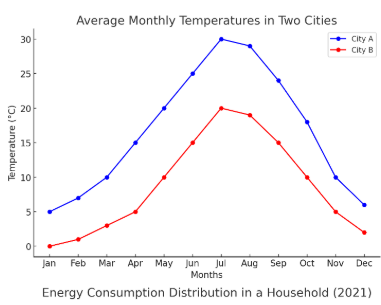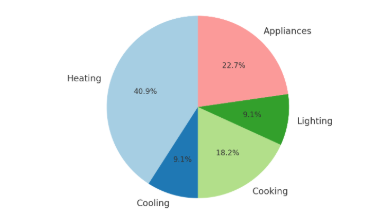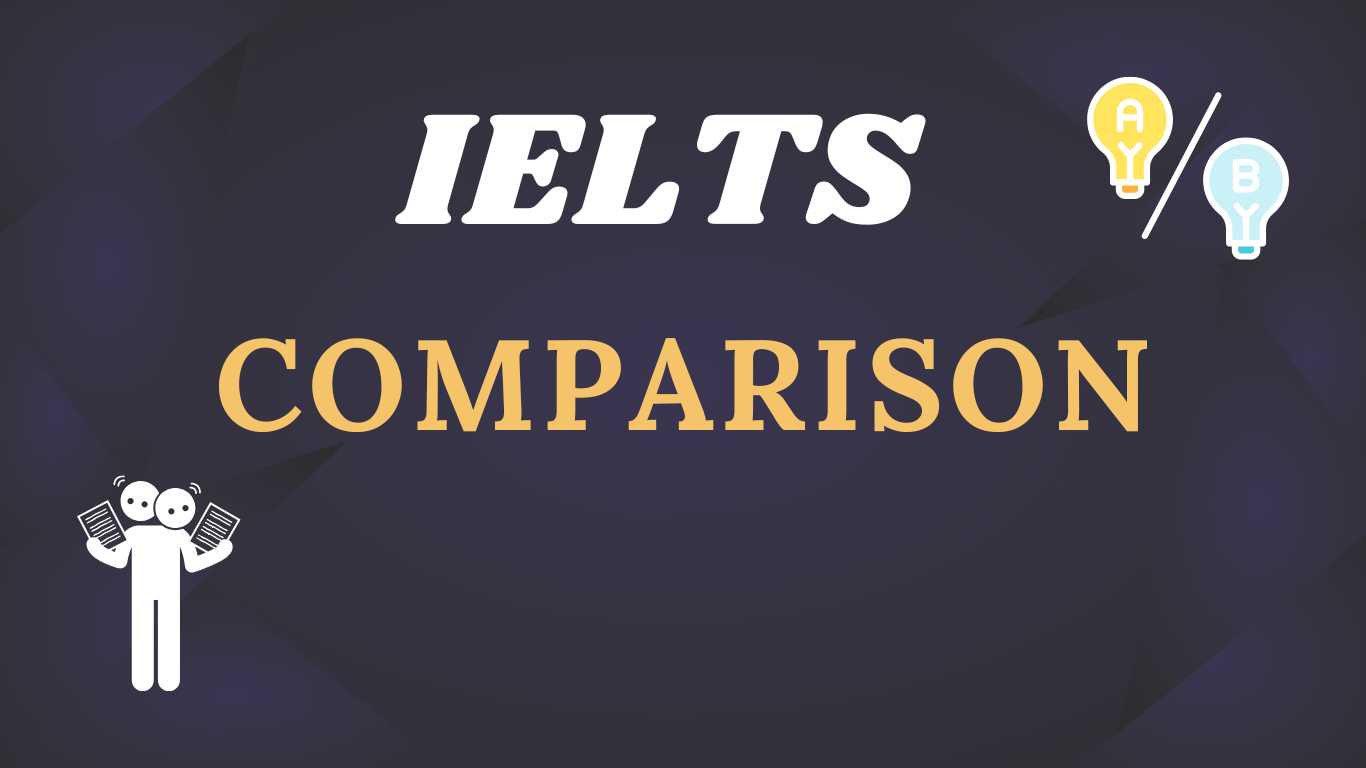Introduction
Embarking on your journey to ace the IELTS Writing section, especially when it comes to comparison tasks, can feel a bit overwhelming. It’s easy to see the challenge and doubt your abilities. But let’s shift that perspective! Mastering comparison skills isn’t just about achieving a high score; it’s about expressing your thoughts clearly and making connections between ideas. In this blog, we’ll break down the essentials of handling comparison tasks, from interpreting data to structuring your responses effectively. With dedication and a sprinkle of practice, you’ll not only enhance your writing skills but also boost your confidence. Remember, every little effort you put in today is a step toward your dream.
"Success is the sum of small efforts, repeated day in and day out."
Understanding Comparison
Comparison is an essential skill in the IELTS Writing section, especially when you’re tackling both Task 1 and Task 2. It’s about evaluating similarities and differences to convey your message clearly and effectively. Let’s dive into how you can master this skill with practical examples that you can relate to.
Comparison in Task 1: Data Interpretation
In IELTS Writing Task 1, you’ll often encounter graphs, charts, or tables that ask you to compare data. For example:
Example Prompt: The chart below shows the number of visitors to three different museums in a city over a year.
In your response, you might say:
- "In 2023, the Art Museum attracted the most visitors, peaking at 150,000 in July. In contrast, the History Museum reached its highest attendance of only 80,000 visitors in August. Meanwhile, the Science Museum maintained a steady flow of around 100,000 visitors throughout the year."
Here, you’re not just listing numbers; you’re helping the reader understand the differences in popularity among the museums. This comparison makes your writing more engaging and informative.
Comparison in Task 2: Argumentative Essays
For Task 2, you might be asked to compare two viewpoints or arguments. Let’s consider this prompt:
Example Prompt: Some people believe that studying abroad is beneficial for students, while others argue that it is better to study in their home country. Discuss both views and give your opinion.
You could frame your response like this:
- "On one hand, studying abroad offers students the chance to immerse themselves in new cultures, which can greatly enrich their educational experience. For instance, a student who studies in the UK might gain valuable insights into British history and social dynamics. On the other hand, staying in one’s home country can foster stronger local connections and enable students to apply their knowledge in a familiar environment. For example, a student studying in India might have better opportunities to intern with local businesses and directly contribute to community development."
In this example, you’re comparing two perspectives, allowing the reader to see the benefits of each side. It shows your ability to think critically and articulate your thoughts, which is key to scoring well on the exam.
Strategies for IELTS Writing Task 1: Data Comparison
When tackling IELTS Writing Task 1, especially with data comparison, it's crucial to present information clearly and logically. Here are some effective strategies to help you succeed:
1. Understand the Data
Before you start writing, take a moment to analyze the visual data presented (graphs, charts, or tables). Identify key trends, significant data points, and any outliers.
Example: If a bar graph shows the number of visitors to three museums over a year, note which museum has the highest and lowest attendance and any seasonal trends.
2. Structure Your Response
A well-organized response will help you present your comparisons effectively. A common structure includes:
- Introduction: Paraphrase the task prompt.
- Overview: Summarize the main trends or differences without going into detail.
- Details: Present the specifics of the data, using comparative language to highlight differences and similarities.
Example Structure:
- Introduction: "The chart illustrates the number of visitors to three different museums over the course of a year."
- Overview: "Overall, the Art Museum attracted the most visitors, while the History Museum saw the least."
- Details: "In July, the Art Museum peaked at 150,000 visitors, whereas the History Museum's peak in August reached only 80,000."
3. Use Comparative Language
Employ a range of comparative language to articulate differences and similarities. Words and phrases like “higher than,” “lower than,” “similar to,” and “in contrast” can help make your comparisons clear.
Example: "While the Art Museum had a higher visitor count, the Science Museum maintained a more consistent flow throughout the year."
4. Practice with Sample Questions
Familiarize yourself with different types of data presentations by practicing with various sample questions. This will help you develop your analytical skills and writing speed.
5. Review and Revise
If time allows, review your response for clarity, coherence, and grammatical accuracy. Ensure that your comparisons are logical and that you’ve used a variety of vocabulary.
Approaches to IELTS Writing Task 2: Comparative Essays
In IELTS Writing Task 2, you may encounter prompts that require you to compare different viewpoints or arguments. Here’s how to approach these essays effectively:
1. Understand the Prompt
Carefully read the prompt to identify whether it asks you to compare viewpoints, discuss the pros and cons, or present a balanced discussion.
Example Prompt: Some people believe that studying abroad is beneficial for students, while others argue that it is better to study in their home country. Discuss both views and give your opinion.
2. Plan Your Essay Structure
A clear structure will guide your writing. A common approach includes:
- Introduction: Paraphrase the prompt and state your opinion (if required).
- Body Paragraph 1: Discuss the first viewpoint with supporting arguments and examples.
- Body Paragraph 2: Present the opposing viewpoint, again with supporting arguments and examples.
- Conclusion: Summarize the main points and restate your opinion or suggest a balanced view.
Example Structure:
- Introduction: "While some argue that studying abroad provides valuable experiences, others contend that remaining in one's home country is more advantageous."
- Body Paragraph 1: "Studying abroad exposes students to diverse cultures, which can enhance their adaptability and global understanding."
- Body Paragraph 2: "Conversely, studying in one's home country fosters stronger local ties and allows students to apply their education to community needs."
- Conclusion: "In my view, both options have merits, but studying abroad offers broader opportunities for personal growth."
3. Use Comparative Language Effectively
In comparative essays, utilize language that clearly indicates comparison and contrast. Phrases like “on the one hand,” “on the other hand,” “similarly,” and “however” help clarify your arguments.
Example: "On one hand, studying abroad offers a unique opportunity to experience different cultures. On the other hand, studying locally provides the benefit of being connected to one's community."
4. Support Your Arguments with Examples
To strengthen your essay, provide specific examples that illustrate your points. This not only adds depth to your arguments but also demonstrates your critical thinking skills.
5. Review for Coherence and Cohesion
Ensure that your essay flows logically from one point to the next. Use linking words and phrases to create smooth transitions between sentences and paragraphs.
Practice Exercises
Here are some previous IELTS Writing Task 1 questions focusing on data comparison, along with suggested solutions. Each question is accompanied by its corresponding year for reference.
Exercise 1
Question: The graph below shows the average monthly temperatures in two cities over a year. Compare the temperature trends in the two cities. (IELTS, 2019)

Suggested Solution:
The graph illustrates the average monthly temperatures in City A and City B throughout the year.
Overall, City A experiences significantly warmer temperatures than City B, with the highest point reaching 30°C in July. In contrast, City B peaks at only 20°C during the same month.
In detail, from January to March, both cities show a gradual increase in temperature; however, City A’s rise is more pronounced. By April, City A reaches 15°C, while City B only reaches 10°C.
Throughout the summer months, City A maintains higher temperatures, peaking in July. Conversely, City B experiences its highest temperature in July but remains consistently lower than City A.
As autumn approaches, both cities see a decrease in temperature, with City A dropping to 18°C in November and City B to 10°C.
Exercise 2
Question: The table below shows the number of students enrolled in different courses at a university in 2020. Compare the figures for the various courses. (IELTS, 2020)

Suggested Solution:
The table presents the enrolment numbers for different courses at a university in 2020.
Overall, the Business Administration course attracted the highest number of students, with 250 enrolments, while the Arts course had the lowest at 70 students.
Specifically, the Engineering and Computer Science courses followed closely behind Business Administration, with enrolments of 200 and 180, respectively.
In contrast, the Humanities course had a moderate enrolment of 150 students, demonstrating a preference for technical and business-related fields among students.
Exercise 3
Question: The pie charts below show the distribution of energy consumption in a household in 2021. Compare the data represented in the charts. (IELTS, 2021)

Suggested Solution:
The pie charts depict the distribution of energy consumption in a household for various purposes in 2021.
Overall, heating accounted for the largest portion of energy consumption, at 40.9%, while the use for lighting and cooling were the smallest at just 9.1%.
Specifically, heating and cooling together made up 60% of the total energy usage, highlighting the significant impact of climate control on energy consumption. In contrast, the consumption for cooking represented 18.2%, demonstrating that cooking needs are also considerable but less than climate control.
Interestingly, energy use for appliances constituted 22.7%, indicating that household appliances play a significant role in overall energy consumption.
Conclusion
As you wrap up your preparation for IELTS Writing, especially in tackling those comparison tasks, keep in mind that each practice session is a stepping stone to your success. It’s perfectly normal to feel challenged, but don’t let that discourage you. Embrace the journey! By refining your ability to compare and contrast, you’re not just gearing up for the exam; you’re also equipping yourself with valuable skills for your future studies and career. So, keep practicing, seek feedback, and celebrate your progress—no matter how small. You have the strength to overcome obstacles and achieve your dreams. Trust in yourself and keep moving forward; the best is yet to come!
"The future belongs to those who believe in the beauty of their dreams."
